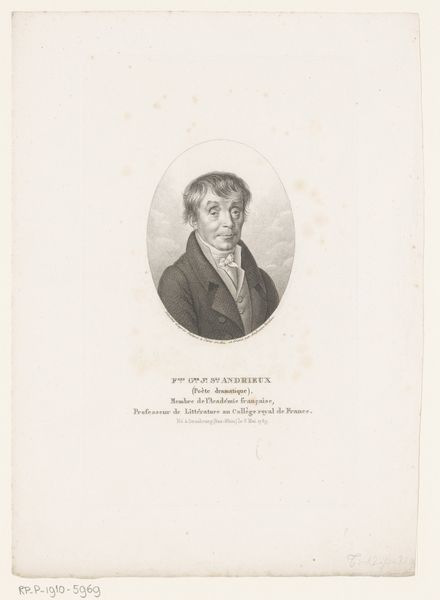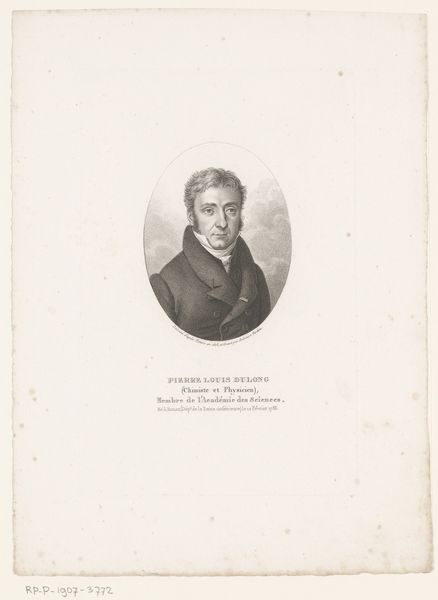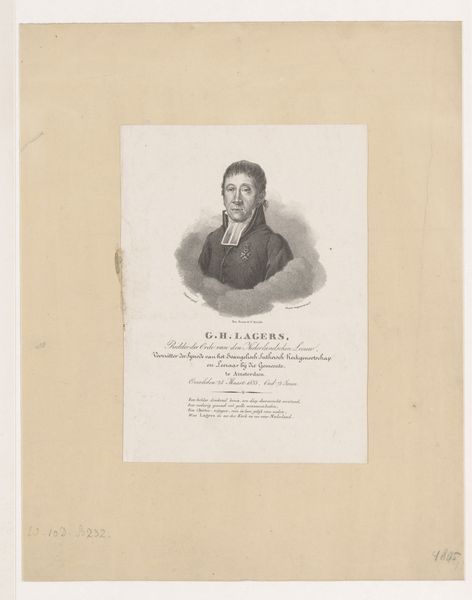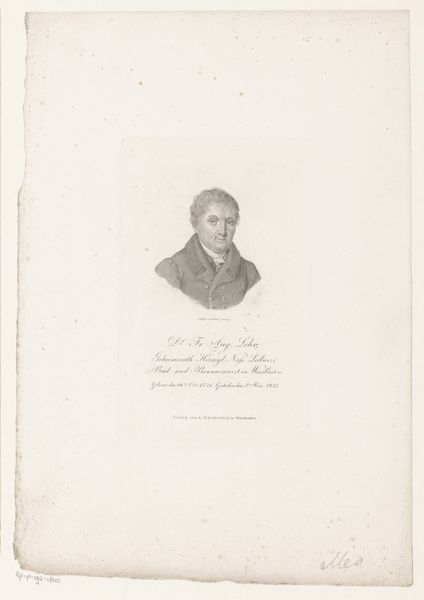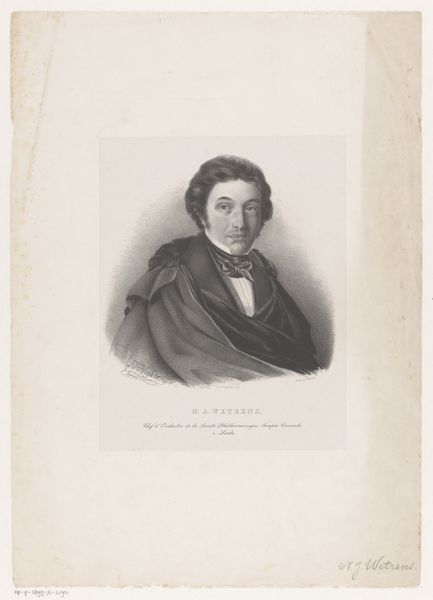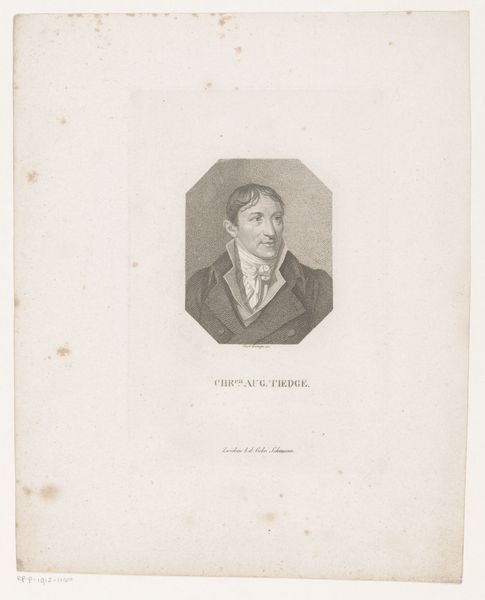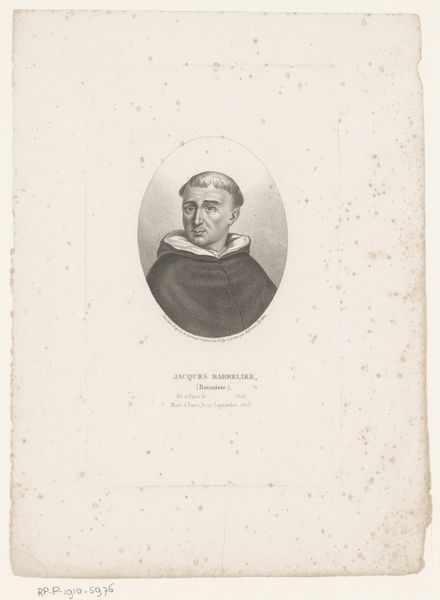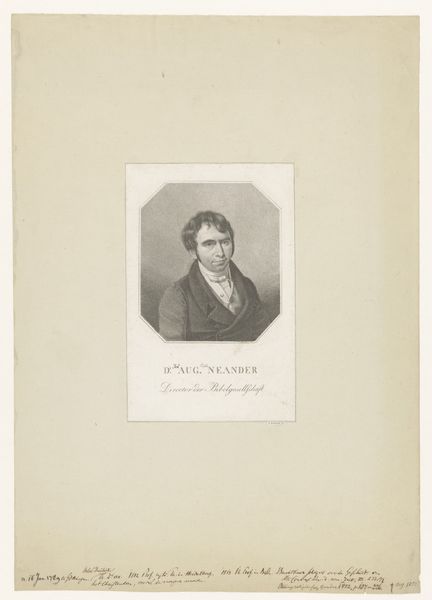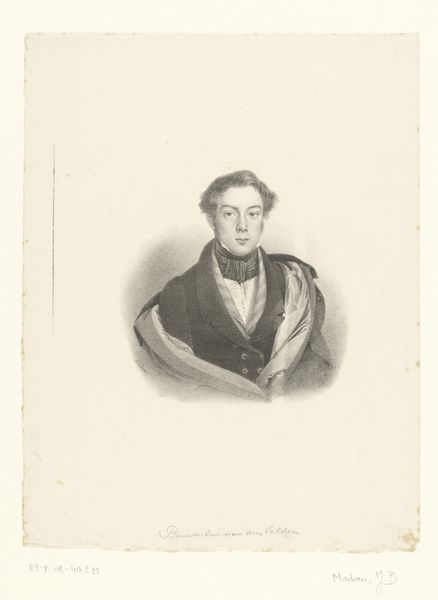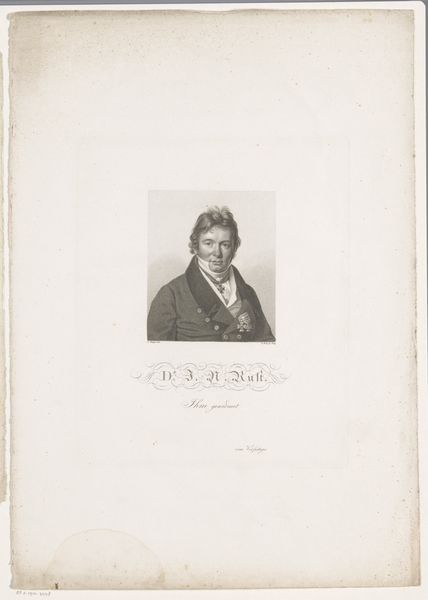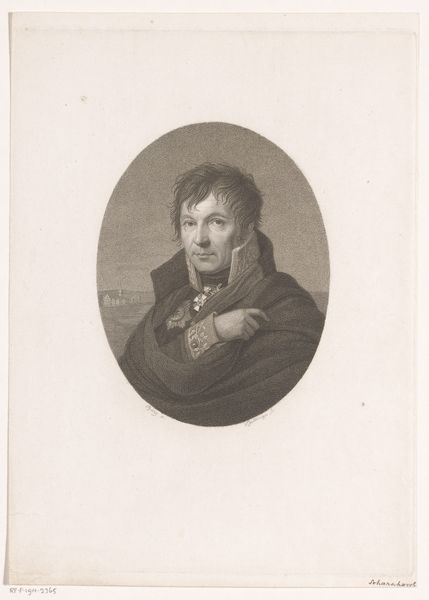
drawing, print, paper, engraving
#
portrait
#
drawing
#
neoclacissism
# print
#
old engraving style
#
paper
#
engraving
Dimensions: height 221 mm, width 139 mm
Copyright: Rijks Museum: Open Domain
Editor: This is "Portrait of Bernard Cabanon," an engraving by Ambroise Tardieu from around 1820. There’s something about the starkness of the lines that makes it feel quite formal and a bit imposing, even though it's a relatively small print. What do you see when you look at this image? Curator: Beyond a simple likeness, I perceive a carefully constructed image of civic virtue, typical of the Neoclassical era. Consider the oval frame – echoing ancient cameos and signifying elevated status. The stark lines you mentioned aren't just aesthetic; they're a deliberate attempt to channel clarity and rationality, values prized during the Enlightenment and post-revolutionary France. The lettering emphasizes Cabanon's role as a deputy. Can you see how even the plainness of his attire contributes to the message? Editor: I do. There’s nothing overtly flashy or aristocratic about him. The focus is on his role, his civic duty. Curator: Precisely. The image aims to project an air of competence, responsibility, and service to the state. Note the details: His gaze is direct, his posture upright. These weren't accidental choices. Every element works together to reinforce an ideal—a citizen embodying republican values. What kind of memory or association does this trigger in you? Editor: It’s interesting to consider the portrait as more than just an image of a person, but really a symbol of a specific time and ideology. Thanks, I am walking away thinking differently about portraits now. Curator: And hopefully more attuned to the symbolic language that artworks, even seemingly simple ones like this, can speak.
Comments
No comments
Be the first to comment and join the conversation on the ultimate creative platform.

